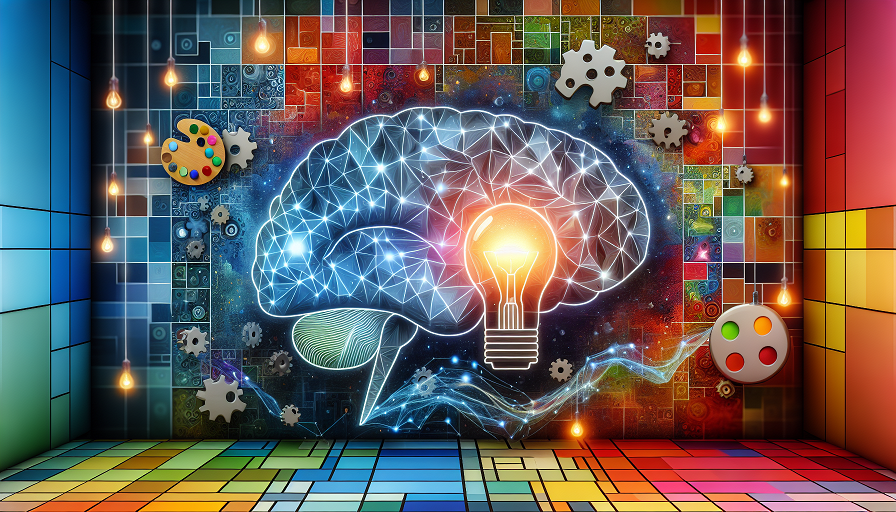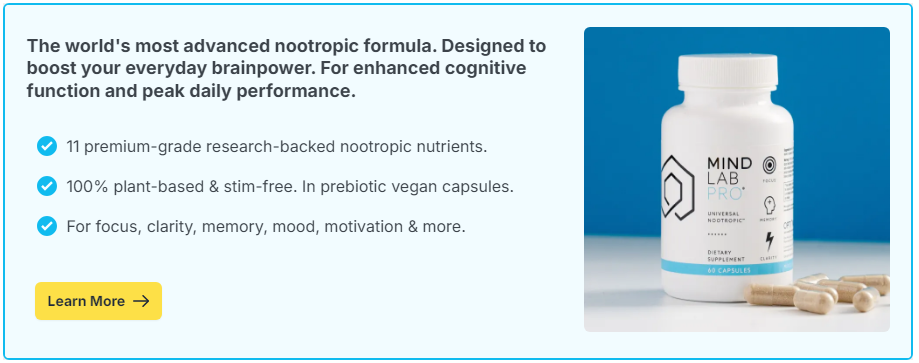
We’ve all experienced that sudden rush of clarity, an “aha!” moment where everything suddenly makes sense. These epiphanies can lead to groundbreaking ideas or provide solutions to problems we’ve been wrestling with for days. But what exactly causes these moments of insight, and how can we encourage more of them in our everyday lives? Here we look at the science behind these magical moments and explore the intriguing world of brain health and creativity.
Contents
The Anatomy of an “Aha!” Moment
Understanding the anatomy of an “aha!” moment begins with exploring our brain’s structure and functions. Our brain is a complex organ composed of different regions responsible for various tasks, such as problem-solving, language, and sensory processing. When we encounter a problem, these regions work together to analyze, compare, and search for solutions.
The “aha!” moment occurs when the brain suddenly connects the dots between different pieces of information. Neuroscientists have identified an area in the brain called the right anterior superior temporal gyrus, which often lights up during these moments. The activity in this area indicates that the brain has successfully made a novel connection, leading to that delightful spark of insight.
The Role of the Subconscious
While it may seem that “aha!” moments just happen out of nowhere, they are often the result of the subconscious mind working behind the scenes. When we focus intently on a problem, our conscious mind utilizes logic and analysis. However, when we take a break or let our mind wander, our subconscious swoops in, processing information in a less structured way. This allows creative and unexpected connections to form.
Ever wonder why you might have a great idea while taking a shower or going for a run? That’s because these activities allow your mind to relax and invite the subconscious to take the wheel. This is why taking breaks and allowing for downtime is so critical to fostering creativity and innovation.
Encouraging More “Aha!” Moments
If “aha!” moments are linked to certain patterns in our brain, can we do anything to increase their frequency? Absolutely! One of the most powerful ways to encourage more insights is to engage actively in activities that stimulate both our conscious and subconscious minds. This can include everything from Brainstorming sessions and engaging in discussions with others to allowing time for relaxation and meditation.
Another approach is to expose yourself to diverse experiences and information. This broadens your knowledge base and provides more mental “raw material” for your brain to make those creative connections. Additionally, maintaining a healthy lifestyle that includes proper nutrition, regular exercise, and sufficient sleep supports overall brain health and enhances your brain’s ability to process information effectively.
The Impact of Nootropics
In recent years, interest in nootropics, also known as brain supplements, has surged. These substances claim to enhance cognitive functions, including creativity, focus, and memory, which are critical components in the production of “aha!” moments. But do they really work? The answer isn’t straightforward, as scientific research is still catching up with these claims.
Some nootropics, like caffeine or certain herbal supplements, have been shown to improve alertness and concentration temporarily. However, there’s limited evidence on their long-term effects on creativity and insight. While they may support certain cognitive processes, relying solely on nootropics for breakthrough ideas isn’t a substitute for engaging with your environment and stimulating your brain naturally.
The Future of Insight and Innovation
As we move further into the 21st century, the quest for new ideas and innovative solutions continues to be at the forefront of progress in every field. Understanding the science behind “aha!” moments not only helps individuals and organizations unlock their creative potential but also provides a roadmap for cultivating a culture of continuous innovation.
Emerging technologies, such as artificial intelligence and advanced brain-computer interfaces, hold the potential to give us even greater insights into how our brains function during moments of creativity and problem-solving. These tools may help us better identify the conditions and environments most conducive to generating new ideas, allowing for more targeted and effective strategies to spur innovation.
The Role of Education
Education systems worldwide are recognizing the importance of fostering creativity and critical thinking alongside traditional academic subjects. Teaching methods are gradually shifting from rote learning to more interactive and explorative approaches that encourage students to think outside the box and find innovative solutions to problems.
By integrating creativity-promoting practices into everyday educational environments, we can better prepare future generations to tackle the complex challenges they will face and develop the skills necessary to spark those coveted “aha!” moments.
Practical Tips for Boosting Your Creativity
If you’re looking to maximize your creative potential and increase the likelihood of experiencing those “aha!” moments, here are some practical tips:
- Practice Mindfulness: Engage in activities like meditation or yoga that promote mental clarity and relaxation.
- Stay Curious: Read widely, explore new places, and try new hobbies to keep your brain actively engaged.
- Journaling: Recording your thoughts and ideas can help you identify patterns and connections over time.
- Challenge Yourself: Put yourself in situations that push your limits and require creative problem-solving.
- Collaborate: Work with others to gain different perspectives, which can lead to unexpected insights.
Nurturing Your Brain for Insight
The brain is a wonderfully intricate organ, and nurturing its health supports its capacity for generating “aha!” moments. By prioritizing mental and physical well-being through balanced nutrition, exercise, and enough rest, you contribute to a more innovative and adaptable mind.
Remember, while brain supplements might offer some benefits, they are most effective when combined with a holistic approach to brain health. Instead of searching for shortcuts, embracing diverse life experiences and fostering an environment where creativity can thrive will help ensure those magic moments happen more frequently.
In the end, “aha!” moments aren’t just about sudden flashes of insight—they’re the culmination of a well-prepared mind that’s ready to connect the dots in new and exciting ways. So, embrace the journey of exploration and creativity, and more epiphanies will surely follow.

